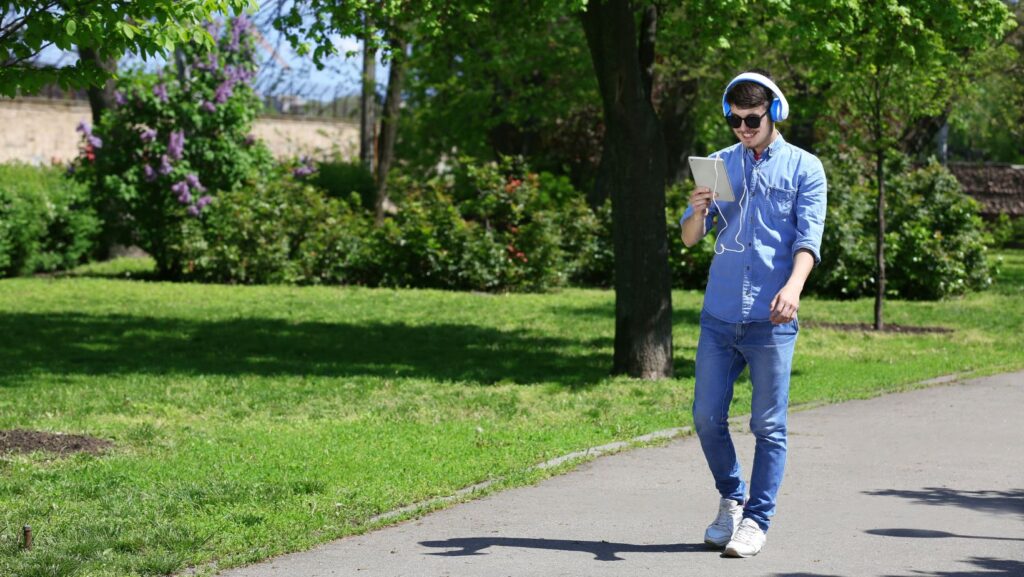In today’s digital world, distractions are everywhere for teenagers, even when they are walking. Walking is usually a safe and easy way to get around, but it can be dangerous when teenagers are constantly using their phones. With earbuds in and eyes on screens, they are more at risk, especially in busy areas or near schools.
The dangers of distracted walking are as serious as those of distracted driving. When teens scroll through social media, text friends, or choose music while crossing streets, they are less likely to see traffic signals, cars, or other dangers. Educating teenagers about these risks and promoting safe habits is essential to prevent injuries and encourage safer ways to move around.
Understanding the Scope of the Problem
Distracted walking has caused many injuries to teens who are walking as pedestrians. Recent statistics show that deaths among young pedestrians are rising, and a significant number of these accidents are due to being inattentive. Mobile phones, wearable technology, and portable audio devices distract teens and make it harder for them to notice dangers like turning cars or speeding drivers.
Most injuries happen during short walks, such as going to school, during lunch breaks, or when crossing familiar intersections. This familiarity can make teens feel overly safe and lead them to assume that drivers will always stop. Teaching young pedestrians about the real dangers of distraction can help them be more cautious.
Common Distractions That Put Teens at Risk
Teen pedestrians face unique safety challenges, especially as digital habits become second nature. Everyday behaviors—many of which seem harmless—can significantly increase the risk of accidents by reducing awareness and delaying reaction times. Recognizing these distractions is key to fostering safer habits.
- Texting or messaging on smartphones takes eyes and attention off the environment, often during critical crossing moments.
- Checking notifications, social media, or playing games distracts from nearby hazards such as oncoming traffic or turning vehicles.
- Streaming music or videos can occupy both visual and auditory focus, limiting situational awareness.
- Wearing headphones at high volumes can block essential sounds like car horns, bike bells, or emergency sirens.
- Multitasking while walking, like eating, chatting with friends, or navigating apps, reduces focus on surroundings.
- These habits often become automatic, meaning teens may not realize how much attention they’re diverting.
- Lowered reaction time and diminished spatial awareness significantly increase the chance of a pedestrian accident.
- Awareness campaigns and education efforts can help teens recognize these risky behaviors and adopt safer practices.
The Role of Parents and Guardians
Parents and guardians greatly influence how teens behave and make decisions. When adults consistently show safe walking habits—like putting away their phones while walking or checking both ways at intersections—teens are more likely to do the same. Setting a good example is an effective way to teach safety values.

Talking about real-life incidents, news stories, or things happening in the neighborhood can lead to important conversations. Encourage open discussions about risks, set rules for device use, and give reminders before leaving the house. This can shape how teens see safety. Family support helps make sure teens understand that being aware while walking is necessary and expected.
Integrating Safety Education into Schools
Schools are essential for shaping teen behavior and safety. Teaching pedestrian safety in health or physical education classes helps teens understand distractions and their effects on reactions.
Campaigns with videos, role-playing, and hands-on activities make a strong impact. Student-led discussions and presentations make the message more engaging. Collaborating with local officials or health professionals adds credibility and resources to these programs.
Encouraging Safe Tech Habits
Technology itself is not harmful, but how we use it can affect safety. Teaching teens to use safety features—like lock screens while moving, voice commands, or walk-only modes—can help them stay focused and reduce distractions. The aim is not to take away technology but to use it safely in daily life.
Digital literacy classes or tutorials on mobile apps can teach teens how to use safety features. When they learn they can control how and when they use technology, they are more likely to make safe choices while walking. Gaining knowledge empowers them to make better decisions.
Urban Design and Infrastructure Improvements
Infrastructure plays a vital role in protecting pedestrians, especially those who may be distracted. Road designs that feature curb extensions, raised crosswalks, reflective paint, and pedestrian-activated signals offer physical cues that demand attention from both walkers and drivers. These enhancements can create buffer zones where distractions are momentarily interrupted.

Communities that invest in youth-friendly urban planning send a strong message about prioritizing pedestrian safety. In cities where teen pedestrian incidents are rising, legal professionals like Malcolm Law Firm PLLC support efforts to hold negligent parties accountable while advocating for better infrastructure and safer walking conditions. Legal involvement can prompt municipalities to rethink how they design spaces that teens move through daily.
Peer Influence and Teen-Led Campaigns
Peer influence is powerful in a teenager’s life. Messages from teen leaders or peer-led social media often resonate better than adult instructions. When teens own safety messages, they encourage their peers to follow them.
Youth leadership in safety advocacy builds community and responsibility. Student councils, clubs, or community groups can host events or start challenges to raise awareness about distracted walking. Involving teens makes pedestrian safety more important.
Using Real-Life Stories to Drive the Message Home
Real-life stories of accidents and near-misses can help teens understand the dangers of distracted walking. Hearing about other teenagers who got hurt while looking at their phones or who almost had a collision makes these risks feel real and relatable.
We can share these stories through video testimonials, guest speakers in classrooms, or community events. When we present them with honesty and empathy, these stories can connect with teens on an emotional level. This encourages them to think and change their behavior. Connecting real people to the statistics makes the dangers more concrete and hard to ignore.
Creating a Culture of Awareness and Prevention
Changing how teens behave when walking while distracted needs more than just a single reminder. We must create a lasting culture of awareness. Families, schools, friends, and communities can help by consistently sharing safety messages and setting clear expectations. Over time, this regular support can shape habits and lower the risk of injuries.
Each effort to educate teens helps build a strong foundation for lifelong safety. When teens learn to stay aware, they protect themselves now and develop good habits for the future. Giving them knowledge, tools, and support helps create a future where everyone shares responsibility for pedestrian safety.

